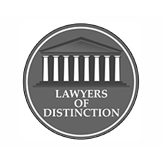Schools and universities are meant to be safe environments for learning, growth, and community engagement. But when walkways are cracked, stairwells poorly lit, or spills left unattended, students, staff, and visitors may suffer serious injuries from slip and fall accidents. In California, determining liability for these incidents depends on whether the institution is public or private, who controls the property, and whether negligence played a role. This article explores how California law handles slip and fall injuries in educational settings and what injured individuals need to know to protect their rights.
Common Causes of Slip and Fall Accidents in Schools
Educational campuses present a wide range of potential hazards, including:
- Wet floors in cafeterias, gyms, or restrooms
- Uneven pavement on sidewalks or outdoor walkways
- Loose carpeting or tiles in classrooms and hallways
- Poor lighting in stairwells or parking structures
- Cluttered corridors during class transitions or events
- Spills from food, drinks, or lab materials
- Construction zones with inadequate signage or barriers
These conditions can lead to serious injuries such as fractures, concussions, and spinal trauma.
Legal Duty of Care in California Educational Institutions
Under California Civil Code § 1714, property owners and occupiers—including schools—must exercise reasonable care to maintain safe premises. This duty applies to:
- Students
- Faculty and staff
- Parents and visitors
- Contractors and vendors
Schools must regularly inspect facilities, repair known hazards, and warn of temporary dangers. Failure to do so may constitute negligence, making the institution liable for injuries.
Public vs. Private Schools: Key Legal Differences
Public Schools and Universities
Public institutions are considered government entities, which means claims must follow the California Government Claims Act. Key requirements include:
- Notice of claim must be filed within six months of the injury (Gov. Code § 911.2)
- The injured party must wait for the entity’s response before filing a lawsuit
- Liability is limited to situations where the entity had actual or constructive notice of the hazard and failed to act
Public schools may also be shielded by sovereign immunity in certain cases, making legal representation essential.
Private Schools and Universities
Private institutions are treated like any other private property owner. Injured individuals may file a premises liability lawsuit within two years of the incident (Code Civ. Proc. § 335.1). These cases follow standard negligence rules and do not require a government claim.
Who May Be Liable?
Liability may rest with one or more parties, depending on control and responsibility:
- School district or university: Responsible for maintaining safe premises
- Staff or faculty: May be liable if their actions or omissions created the hazard
- Maintenance contractors: If hired to clean or repair and failed to do so properly
- Third-party vendors: Such as food service or event organizers operating on campus
Example: Custodial Negligence
If a custodian mops a hallway and fails to place a warning sign, both the school and the custodian may be liable—especially if the area is heavily trafficked and the hazard was foreseeable.
Proving Negligence in California
To succeed in a slip and fall claim, the injured party must prove:
- A dangerous condition existed
- The defendant knew or should have known about it
- The defendant failed to repair or warn about the hazard
- The hazard directly caused the injury
California courts recognize both actual notice and constructive notice. If the hazard existed long enough that a reasonable inspection would have discovered it, liability may apply.
Comparative Fault in California
California follows a pure comparative negligence rule. If the injured person was partially at fault—such as running in a hallway or ignoring a warning sign—their compensation may be reduced proportionally.
For example, if a jury finds the plaintiff 20% responsible and awards $100,000, the final payout would be $80,000.
Evidence That Strengthens a School Slip and Fall Claim
To build a strong case, injured individuals should gather:
- Photos of the hazard and accident scene
- Incident reports filed with school administration
- Surveillance footage, if available
- Witness statements from students, staff, or visitors
- Maintenance logs showing inspection frequency
- Medical records documenting the injury
An experienced attorney can help preserve evidence and navigate school-specific procedures.
Real-Life Example
A college student at a private university in California slipped on spilled coffee in a campus café. Staff failed to clean the spill or place a warning sign, despite prior complaints. The student suffered a fractured ankle and missed a semester of classes. Her attorney used incident reports and witness testimony to prove negligence. The case settled for $275,000, covering medical expenses, tuition reimbursement, and pain and suffering.
What to Do After a Slip and Fall at a California School
If you’re injured on school property:
- Seek medical attention immediately
- Report the incident to school officials and request a copy of the report
- Take photos of the hazard and your injuries
- Collect witness information
- Avoid giving detailed statements to insurers before consulting an attorney
- Contact a California slip and fall injury lawyer experienced in school liability claims
Prompt action helps preserve evidence and ensures compliance with legal deadlines.
Final Thoughts
Slip and fall injuries at California schools and universities can have lasting consequences—but the law provides a path to justice. Whether the institution is public or private, injured individuals have rights and options. By understanding the legal landscape, documenting the incident, and working with a skilled attorney, you can pursue fair compensation and hold negligent parties accountable.
References
- California Civil Code § 1714. https://leginfo.legislature.ca.gov/faces/codes_displaySection.xhtml?lawCode=CIV§ionNum=1714
- California Code of Civil Procedure § 335.1. https://leginfo.legislature.ca.gov/faces/codes_displaySection.xhtml?lawCode=CCP§ionNum=335.1
- California Government Code § 911.2. https://leginfo.legislature.ca.gov/faces/codes_displaySection.xhtml?lawCode=GOV§ionNum=911.2
- LegalClarity – Who Is Responsible for a Slip and Fall at School?
- Ellis Helm APC – Premises Liability at Public Institutions
- Freedman Law – Who Is Liable in a Slip and Fall Accident in California?





